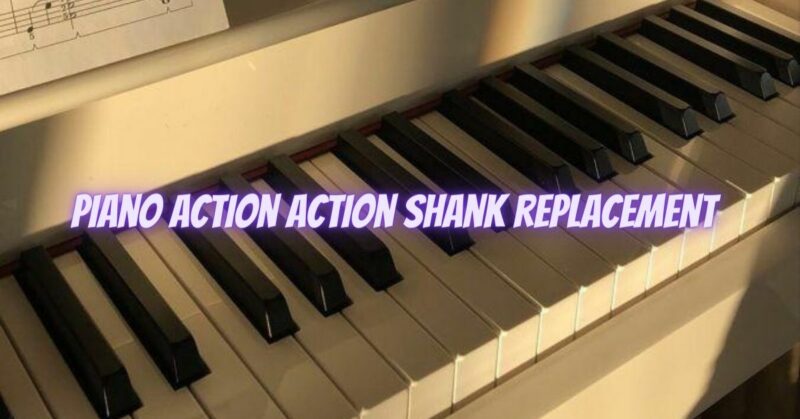The piano action shank is a vital component that connects the key to the piano’s hammer, allowing the hammer to strike the strings when the key is pressed. As pianos age or undergo heavy use, the action shanks can wear out, leading to issues such as sluggish key response or inconsistent hammer movement. Replacing a worn or broken action shank is essential to restore the piano’s playability and responsiveness. In this article, we’ll explore the significance of the piano action shank, common issues that arise, and the process of replacing it.
Understanding Piano Action Shank: The action shank is a wooden or metal rod that connects the key to the piano’s hammer. When a pianist presses a key, the action shank transfers that motion to the hammer, causing it to strike the corresponding string and produce sound. The action shank must be precisely aligned and in good condition to ensure a smooth and accurate response when playing the piano.
Common Issues with Piano Action Shank:
- Wear and Tear: Over time, the action shank can wear down due to extensive use, causing it to become loose or develop excessive play.
- Breakage: Physical damage, mishandling, or accidents can lead to the action shank breaking, rendering the key unresponsive.
- Misalignment: If the action shank becomes misaligned or bent, it can disrupt the key’s movement and cause uneven hammer striking.
- Corrosion: In pianos with metal action shanks, exposure to moisture or environmental factors can lead to corrosion, affecting the shank’s smooth movement.
Piano Action Shank Replacement Process: Replacing a piano action shank is a delicate and intricate process that requires the expertise of a skilled piano technician. Here are the key steps involved:
- Assessment: The technician begins by carefully assessing the piano’s action and identifying any worn, damaged, or broken action shanks.
- Disassembly: The action is disassembled to access the action shanks. This involves removing the keyframe and action mechanism.
- Shank Removal: The technician skillfully removes the worn or damaged action shanks from both the keys and hammers.
- Replacement Shanks: New action shanks are selected to match the specifications of the piano’s make and model. These can be made of wood or high-quality metal.
- Installation: The new shanks are meticulously installed, ensuring they are precisely aligned with the keys and hammers.
- Regulation: After the replacement, the technician regulates the action to ensure smooth and even key movement. This step involves adjustments to achieve the desired touch and responsiveness.
- Testing and Fine-Tuning: The piano’s action is thoroughly tested to ensure that all keys respond accurately and uniformly. Any final adjustments are made to fine-tune the action.
Conclusion: Piano action shank replacement is a crucial repair that can significantly improve the piano’s playability and touch. It requires the expertise of a skilled piano technician who understands the complexities of the action mechanism. Timely replacement of worn or broken action shanks ensures that the piano responds accurately and consistently to the pianist’s touch, allowing for a more enjoyable and expressive playing experience. If you notice any issues with the piano’s action or suspect problems with the shanks, it’s essential to seek the services of a qualified piano technician. With proper action shank replacement and maintenance, your piano will continue to deliver the beautiful sound and responsive touch that makes it a joy to play.


